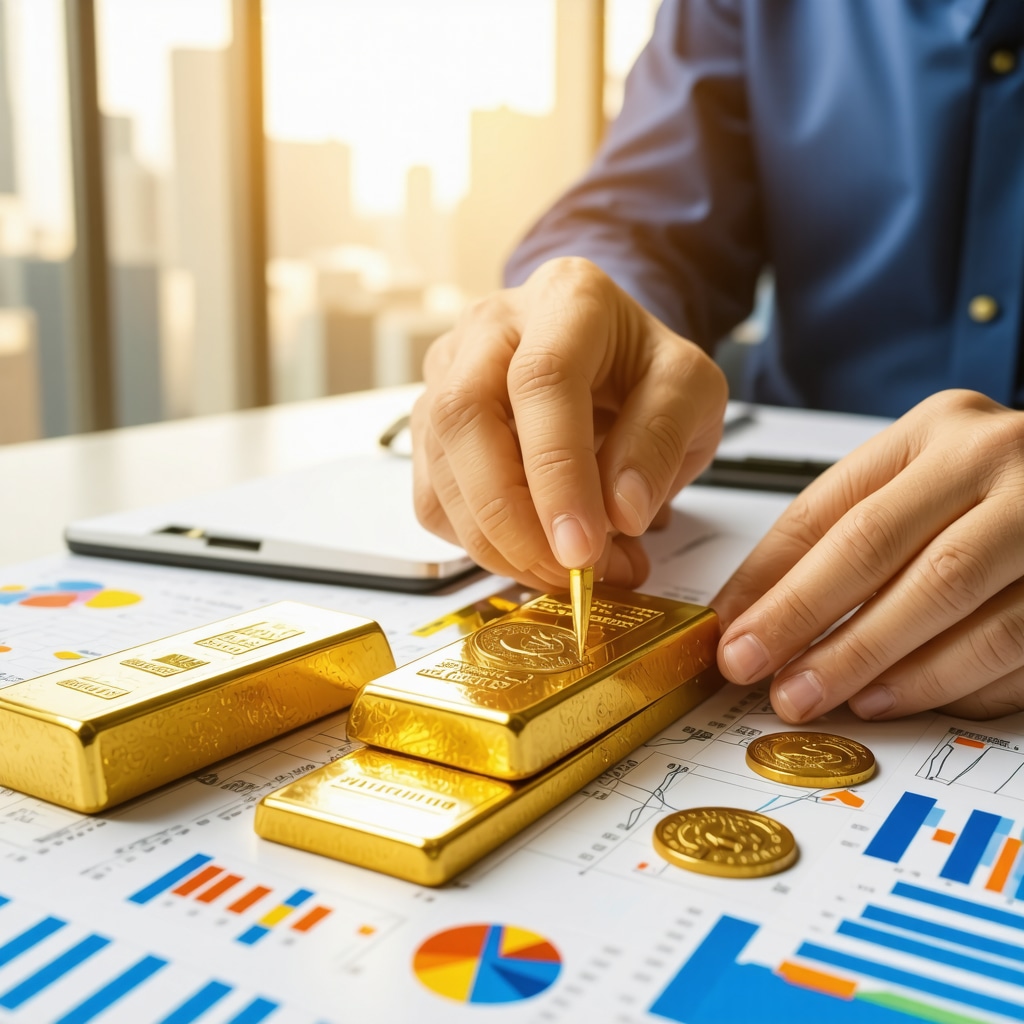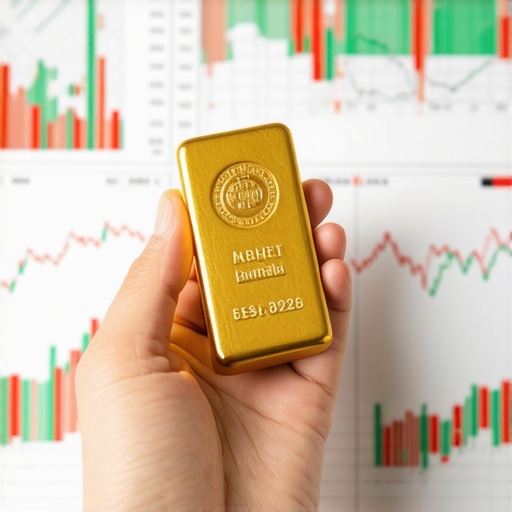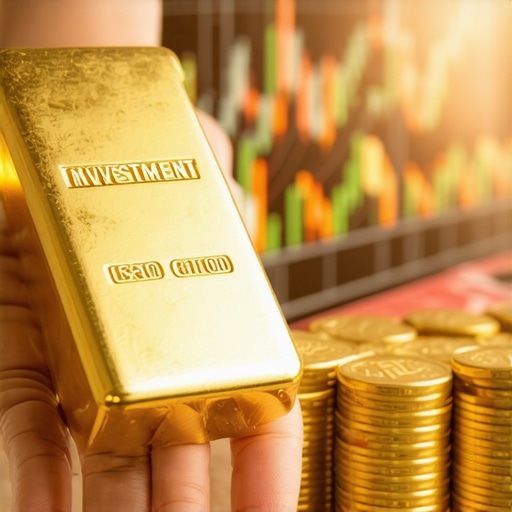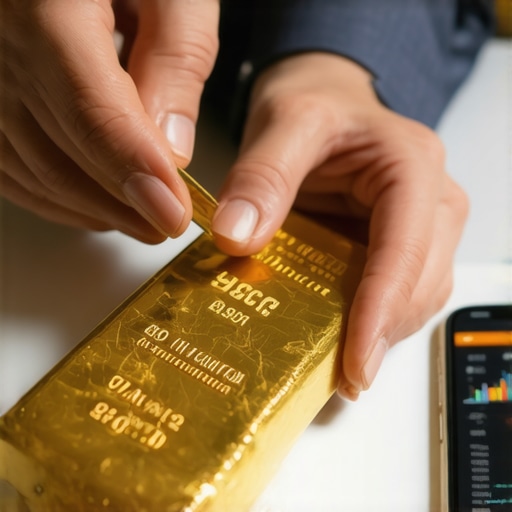Unlocking the Potential of Gold Investment in 2025: A Strategic Perspective
As we approach 2025, the significance of gold as a resilient asset class becomes increasingly evident amidst fluctuating global markets and geopolitical tensions. Experienced investors recognize that a nuanced understanding of supply-demand dynamics, macroeconomic indicators, and geopolitical influences is crucial for crafting a robust gold investment strategy. This article delves into advanced insights that empower investors to navigate the evolving landscape of gold investment with confidence.
Advanced Considerations: Gold’s Market Mechanics and Analytical Frameworks
How do supply and demand dynamics influence gold prices in 2025?
In 2025, the gold market continues to be shaped by intricate supply-demand interactions. Factors such as mining production levels, central bank reserves, and consumer consumption patterns interplay in complex ways. For instance, disruptions in mining operations—due to environmental policies or geopolitical conflicts—can constrain supply, thereby elevating prices. Simultaneously, burgeoning demand from emerging markets and institutional investors bolsters price stability. Analyzing these variables through supply-demand models, as discussed in industry reports like those from the World Gold Council, can provide actionable insights.
Expert Strategies for Long-term Wealth Preservation
Investors aiming for sustainable wealth growth should consider diversifying within physical gold assets, including coins and bars, while leveraging financial instruments such as gold ETFs and futures. The strategic allocation depends on risk appetite, liquidity needs, and market outlooks. For example, selecting the right gold ETF can offer exposure to gold’s upside while maintaining liquidity.
Leveraging Gold’s Role as a Hedge in 2025
Gold’s historical role as a hedge against inflation and geopolitical risks remains pertinent. As central banks’ gold reserve policies evolve—often influenced by economic stability and monetary policy—their purchasing behaviors can significantly impact market prices, as detailed in recent analyses like the one from the IMF. Investors should monitor central bank activities and macroeconomic indicators (source) to anticipate potential price movements.
Addressing Complex Queries: How Can Gold Futures Trading Maximize Returns in 2025?
Gold futures trading offers a sophisticated avenue for leveraging market volatility. By employing technical analysis, hedging strategies, and market timing techniques, investors can optimize profits. For detailed methodologies, consult resources like the article on futures trading strategies.
To deepen your expertise, explore related content such as gold investment tips for beginners and the latest market trend analyses for 2025. Your insights can contribute to a richer understanding of this vital asset class, fostering a community of well-informed investors.
Deciphering the Complex Web of Gold Price Drivers in 2025
As we navigate through 2025, understanding the multifaceted factors influencing gold prices becomes paramount for investors seeking to optimize their portfolios. Beyond traditional supply and demand, geopolitical developments, monetary policies, and technological advancements play pivotal roles in shaping market dynamics. Experts emphasize that a nuanced analysis of these elements can unlock significant investment opportunities in this volatile yet rewarding asset class.
How Do Geopolitical Tensions and Economic Uncertainty Impact Gold Prices?
Geopolitical tensions, such as conflicts or trade disputes, often amplify gold’s appeal as a safe haven. In 2025, ongoing geopolitical uncertainties—like shifts in international diplomacy and regional conflicts—continue to bolster demand for physical gold and gold-related financial instruments. Additionally, economic uncertainty, stemming from inflationary pressures and currency fluctuations, encourages investors to seek stability in gold, further elevating prices. According to a comprehensive report by the World Gold Council, these political and economic factors are among the primary catalysts for gold price movements this year.
What Role Are Central Banks Playing in the Gold Market?
Central banks worldwide remain key players, with their gold purchase policies directly influencing supply-demand dynamics. As detailed in recent analyses from the IMF, central banks are balancing reserve diversification against geopolitical considerations, often increasing their gold holdings during periods of economic stress. This behavior can create upward pressure on prices, especially when combined with reduced official gold sales from major economies. Monitoring central bank activity, as outlined in this resource, provides investors with valuable foresight into potential price trends.
How Is Technological Innovation Reshaping Gold Investment Strategies?
Emerging technologies, such as blockchain and digital gold platforms, are revolutionizing how investors access and trade gold. These innovations enable increased liquidity, transparency, and security, making gold investment more accessible to a broader audience. For instance, gold-backed cryptocurrencies and tokenized assets are gaining popularity, offering a new layer of diversification and flexibility. Industry experts suggest that integrating these technological tools into traditional investment strategies can enhance portfolio resilience and returns in 2025.
What Are the Most Promising Gold Investment Vehicles for 2025?
Investors should consider a diversified approach, combining physical gold—such as coins and bars—with financial instruments like gold ETFs, mutual funds, and futures. For example, top gold ETFs tailored for 2025 offer liquidity and exposure to market movements, while futures contracts enable strategic leveraging. Additionally, exploring gold mining stocks and sector-specific funds can provide leverage to industry growth, especially as mining companies adapt to new technological and environmental standards.
For more detailed guidance, check out this resource on supply-demand dynamics or consider leveraging gold futures trading techniques to enhance your investment strategy.
Are you leveraging technological innovations or geopolitical insights to shape your gold investment approach? Share your strategies or questions in the comments below and join a community of informed investors driving smart wealth growth in 2025.
Harnessing the Power of Technological Innovations to Enhance Gold Investment Portfolios in 2025
As technological advancements continue to redefine financial markets, gold investment strategies are no exception. Blockchain technology, digital gold platforms, and tokenization are transforming traditional paradigms, offering investors unprecedented transparency, security, and liquidity. These innovations facilitate fractional ownership, real-time trading, and seamless cross-border transactions, empowering investors to diversify their portfolios more effectively.
For instance, gold-backed cryptocurrencies like PAX Gold and Tether Gold allow investors to hold gold in a digital form, combining the stability of physical assets with the flexibility of digital assets. According to a report by the World Economic Forum (WEF), the integration of blockchain in gold trading is anticipated to grow by over 30% annually through 2025, fundamentally altering how investors access and utilize gold as a financial instrument.
Deciphering the Impact of Geopolitical Developments and Policy Shifts on Gold’s Safe-Haven Status
In 2025, geopolitical tensions and shifts in monetary policies are expected to continue influencing gold prices significantly. The escalation of regional conflicts, trade disputes, or unexpected sanctions can trigger surges in gold demand as a safe haven. Conversely, resolution of conflicts or stable diplomatic relations might temporarily suppress demand but ultimately favor long-term stability in gold prices.
Moreover, central banks’ evolving policies—such as diversification of reserves, quantitative easing, or interest rate adjustments—play a critical role. For example, the European Central Bank’s recent move towards digital euro implementation could influence gold’s relative attractiveness as a reserve asset. Investors should monitor policy announcements from key central banks, like the Federal Reserve or People’s Bank of China, as outlined in the International Monetary Fund’s (IMF) latest reports, to anticipate potential market shifts.
What strategic approaches can investors adopt to hedge against geopolitical risks while maximizing returns in gold?
One advanced strategy involves dynamic asset allocation, where investors adjust their holdings based on geopolitical risk assessments and macroeconomic indicators. Incorporating gold derivatives such as options and futures can also help hedge against volatility, while leveraging technical analysis tools can identify optimal entry and exit points. Engaging with geopolitical risk analytics providers, like Stratfor or Eurasia Group, can offer real-time insights to inform these decisions.
Additionally, diversifying across physical gold, ETFs, and innovative digital assets creates a resilient portfolio capable of weathering geopolitical turbulences. As Dr. Robert M. Cutler of Harvard University notes, “A multi-layered approach to gold investment mitigates risks and enhances potential upside during uncertain times.” For detailed methodologies, explore resources such as Gold Council’s strategic allocation frameworks.
Exploring the Future of Gold Mining and Its Implications for Investment in 2025
The evolution of gold mining technology, environmental standards, and geopolitical considerations is shaping the supply side of the market. New mining techniques like in-situ leaching, automation, and sustainable practices reduce costs and environmental impact, potentially increasing supply and affecting prices.
Furthermore, geopolitical tensions in major gold-producing regions—such as South Africa, Russia, and South America—pose risks of supply disruptions. According to a report by the U.S. Geological Survey (USGS), global gold mine production is projected to grow modestly in 2025, but geopolitical risks could cause short-term supply constraints, elevating prices.
Investors should consider sector-specific ETFs or stocks of mining companies adopting environmentally friendly and technologically advanced practices to capitalize on this evolving landscape. For instance, companies like Newmont and Barrick Gold are investing heavily in sustainable mining initiatives, which could yield long-term competitive advantages.
Conclusion: Building an Adaptive and Forward-Looking Gold Investment Strategy for 2025
In the dynamic landscape of 2025, successful gold investment hinges on integrating cutting-edge technologies, geopolitical risk assessments, and supply-demand analytics. By adopting a flexible, data-driven approach, investors can not only hedge against uncertainties but also seize emerging opportunities for growth. Engaging with expert insights, leveraging innovative financial products, and maintaining awareness of global developments are essential components of an advanced gold investment strategy.
Are you ready to refine your approach? Dive deeper into these topics and share your strategies or questions with our community of seasoned investors. Together, we can unlock the full potential of gold in 2025 and beyond.
Harnessing Innovation in Gold Storage and Digital Assets for 2025
As the landscape of gold investment evolves, integrating cutting-edge storage solutions and digital assets becomes paramount. Investors are increasingly turning to secure vaulting facilities employing biometric access controls and climate-controlled environments, ensuring the physical integrity of their holdings. Concurrently, the rise of tokenized gold and blockchain-based platforms offers unprecedented liquidity and transparency, bridging the gap between traditional and digital finance. According to a report by the World Economic Forum, digital gold assets are projected to grow at a CAGR of over 35% through 2025, revolutionizing the way investors diversify portfolios.
The Strategic Impact of Geopolitical Shifts and Economic Policies on Gold Dynamics
In 2025, geopolitical developments continue to exert a profound influence on gold prices. The escalation or resolution of regional conflicts, changes in trade policies, and diplomatic relations directly affect market sentiment. Notably, the adoption of digital currencies by major economies, such as the European Central Bank’s digital euro initiative, could alter gold’s role as a reserve asset. Investors must monitor policy shifts, sanctions, and international relations to refine risk management strategies. The IMF’s latest analysis underscores that geopolitical risk premiums are likely to remain elevated, reinforcing gold’s status as a safe haven asset.
What Are the Most Advanced Techniques for Analyzing Gold Market Sentiment?
Expert traders leverage sophisticated analytical tools to interpret market sentiment and predict price movements. These include machine learning algorithms analyzing social media, news feeds, and geopolitical event timelines to gauge investor psychology. Sentiment analysis platforms, integrated with real-time data feeds, enable traders to identify emerging trends and potential reversals. For instance, combining sentiment metrics with traditional technical analysis—such as Fibonacci retracements and Elliott wave theory—can enhance decision-making precision. Industry leaders recommend staying abreast of AI-driven analytics to maintain a competitive edge in 2025’s volatile markets.
How can deep data analytics and AI-driven models improve gold investment decisions?
Deep data analytics harness vast datasets—from macroeconomic indicators to geopolitical news—to generate predictive models with higher accuracy. Artificial intelligence algorithms can identify subtle market signals, forecast price trajectories, and optimize entry and exit points. According to a study published by the Journal of Financial Data Science, AI-enhanced models outperform traditional methods by up to 20% in predictive accuracy. Integrating these technologies into your investment strategy not only mitigates risks but also uncovers hidden opportunities in the gold market. Explore platforms like Kensho or DataRobot, which specialize in financial market analytics, to elevate your decision-making process.
Engage with these advanced tools and insights to build a resilient, forward-looking gold investment portfolio—your pathway to sustained growth and risk mitigation in 2025 and beyond.
Strategic Insights from Gold Investment Experts in 2025
1. Market Resilience Through Diversification
Experts emphasize that diversifying across physical gold, ETFs, and digital assets mitigates risks associated with geopolitical and economic fluctuations, ensuring portfolio resilience.
2. Technological Innovation as a Growth Catalyst
Emerging blockchain platforms and tokenized gold assets are revolutionizing liquidity and transparency, providing investors with innovative avenues for wealth preservation and growth.
3. Geopolitical Risks as Market Drivers
Monitoring geopolitical developments and central bank policies is crucial, as these factors significantly influence gold prices, especially during periods of unrest and policy shifts.
4. Supply-Demand Dynamics in Focus
Understanding the impact of mining industry innovations and supply constraints in key regions like South Africa and Russia can offer strategic entry and exit points for investors.
5. Advanced Analytical Tools for Market Timing
Utilizing AI-driven sentiment analysis and technical indicators enhances decision-making precision, allowing investors to capitalize on market volatility effectively.
Curated Expert Resources for Deepening Gold Investment Knowledge
- World Gold Council: Renowned for comprehensive market reports and supply-demand analytics, essential for strategic planning.
- IMF and World Economic Forum (WEF): Provide authoritative insights into macroeconomic trends and technological innovations impacting gold markets.
- Financial Data Science Platforms (e.g., Kensho, DataRobot): Offer AI-powered analytics tools that refine market predictions and trading strategies.
- Geopolitical Risk Analytics Providers (e.g., Stratfor, Eurasia Group): Essential for assessing geopolitical risks influencing gold’s safe-haven status.
- Industry Publications and Expert Blogs: Stay updated with insights from leading analysts and practitioners in gold investing.
Final Reflection: Embracing a Sophisticated Approach to Gold Investment in 2025
The evolving landscape of gold investment in 2025 demands a high-level understanding of macroeconomic trends, geopolitical risks, and technological innovations. Integrating expert insights, advanced analytics, and diversified asset strategies is vital for building resilient portfolios capable of navigating volatility and capturing emerging opportunities. As seasoned investors know, continuous learning and strategic agility are key to unlocking the full potential of gold as a cornerstone of wealth preservation. Engage with these authoritative resources, share your insights, and remain adaptable—your mastery of gold investment will define your success in 2025 and beyond.










